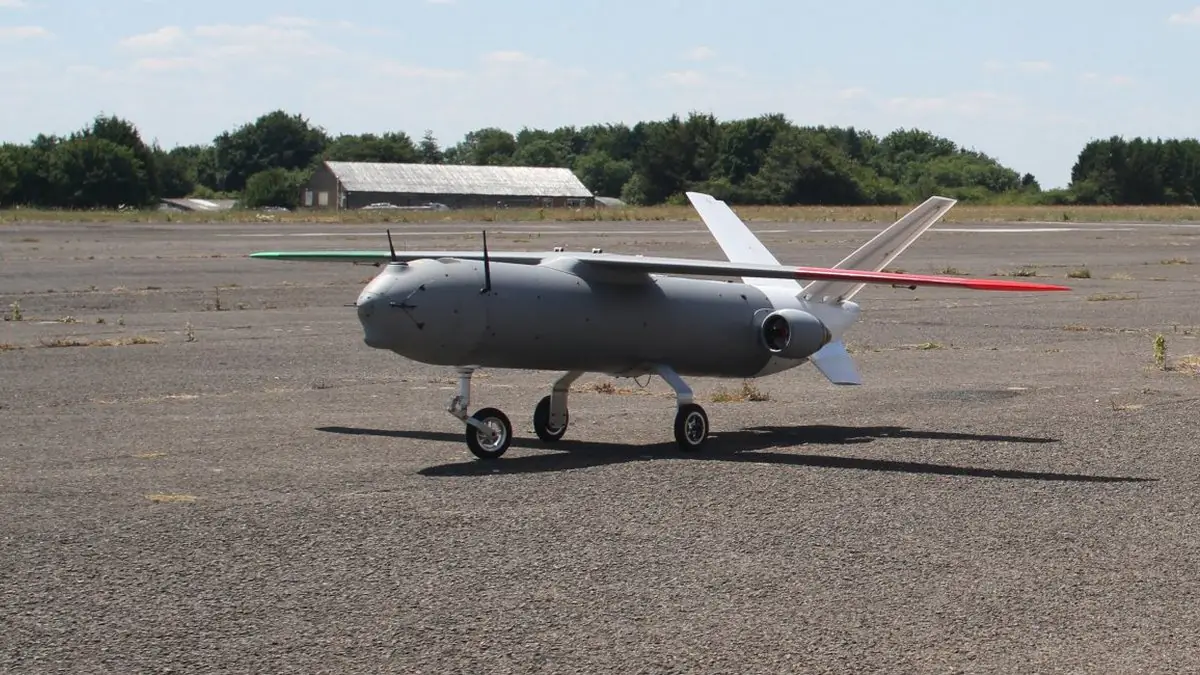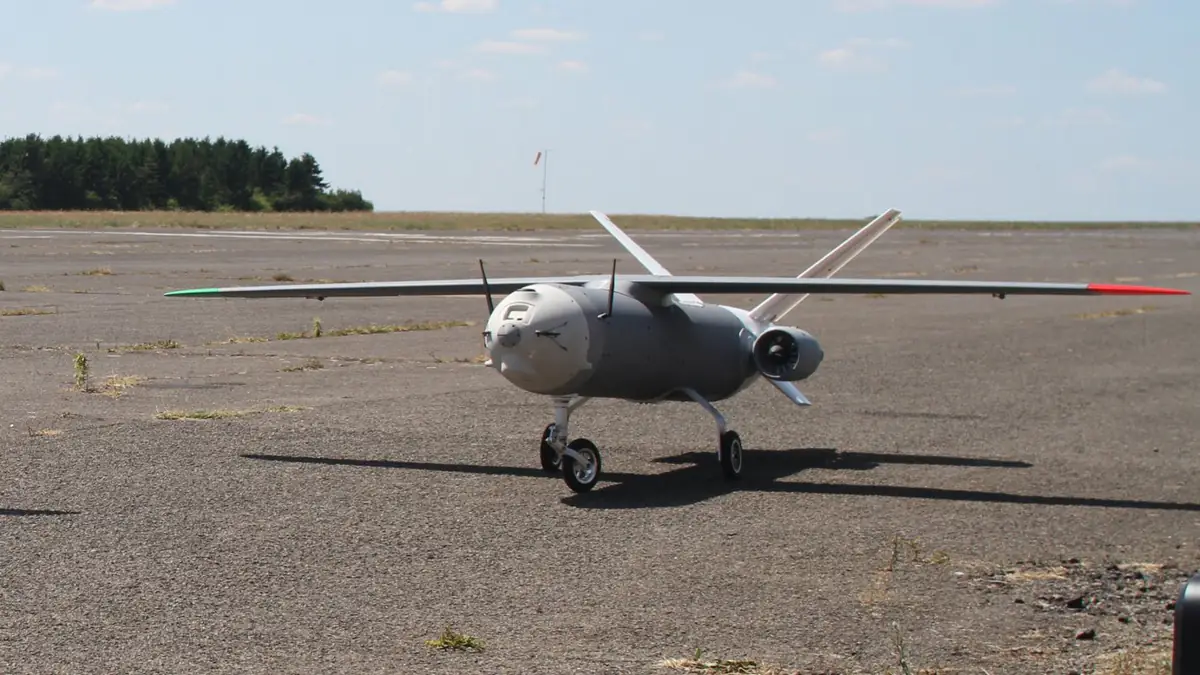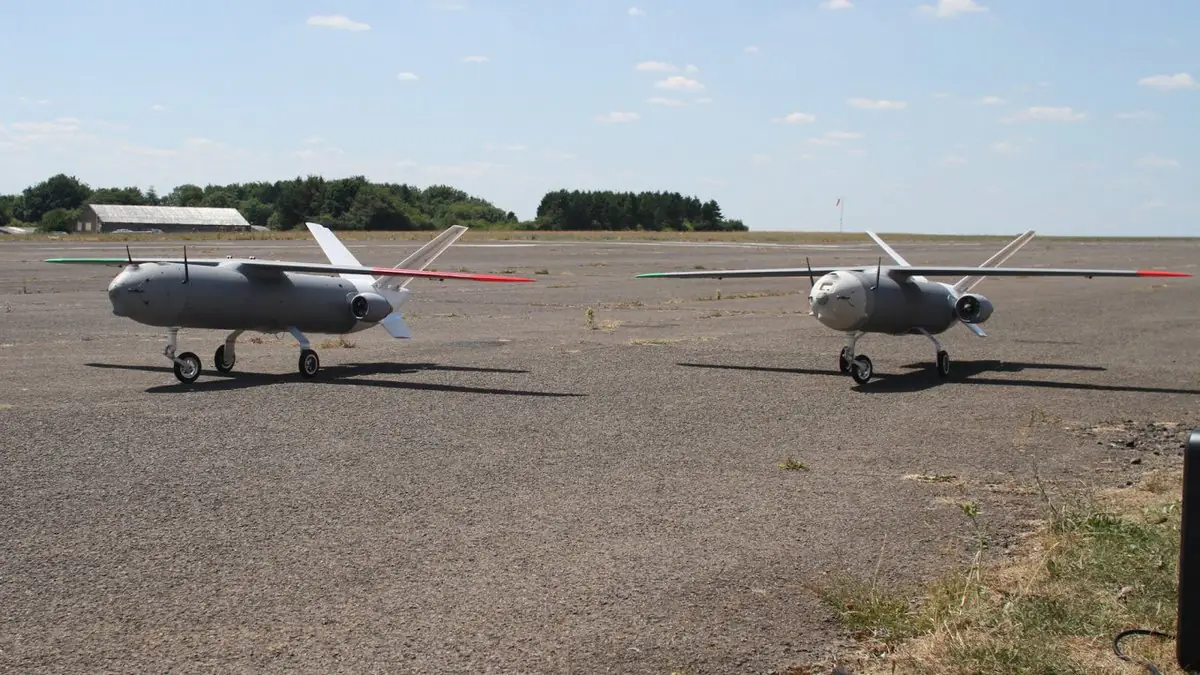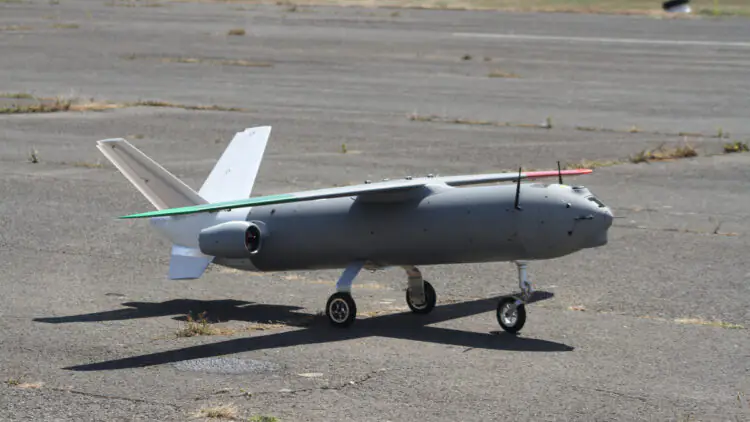In the UK, a new type of missile-drone called SkyShark has been developed, designed for mass, cost-effective production. The project is led by MGI Engineering, which positions the drone as a fully “sovereign” solution – built entirely with British technologies and components.
The development includes two different propulsion options. One is the newly designed miniature A300 jet engine, created in collaboration with Argive Ltd. The second is the HS125 ducted electric fan developed by Greenjets. In both configurations, the SkyShark uses a twin-engine setup for thrust.

During an official demonstration, MGI representatives stated that their new drone is capable of striking targets at distances of up to 250 kilometers, reaching speeds over 450 km/h, and carrying a 20-kilogram warhead. For navigation, it uses an inertial system paired with terrain contour mapping (TERCOM), allowing it to operate independently of satellite signals.
The SkyShark platform is modular, which means it can be easily adapted for specific missions. This includes swapping out the warhead, upgrading navigation systems, or integrating other components. The drone can be launched from a runway, by catapult, or from a launch rail. According to information from ESD, MGI Engineering emphasizes that SkyShark was designed with mass production in mind, and the company is open to licensing the missile-drone design to third-party manufacturers.
In the context of its development, the SkyShark comes across as a relatively mature product, clearly aimed at simplicity and scalability for serial production. At the same time, the use of two compact jet engines raises some questions about thrust efficiency and overall platform cost. These types of propulsion systems are generally not known for being inexpensive.

The Hemlock 125 engine from Greenjets (specifically the HS125 variant) delivers around 15 kgf of thrust at a maximum of 40,000 RPM, enabling the drone to cruise at speeds over 540 km/h. However, the power output of such an engine likely contributes significantly to the overall cost of the system, raising questions about the practicality of using two of them on a single platform.
It’s also worth noting that the SkyShark’s warhead weighs only 20 kilograms. This relatively low payload limits the range of targets it can effectively engage. Even if the system offers high precision, the warhead’s destructive potential may be insufficient against medium or large-scale targets.
At the same time, the SkyShark project stands out as both a technological and industrial effort, particularly due to its exclusive use of British-made components, adaptable design, and focus on large-scale production. These factors make it a notable example of a platform developed with both operational flexibility and manufacturing efficiency in mind.

For comparison, MBDA is also developing a cost-effective long-range strike system known as the One-Way Effector. Unlike the SkyShark, it uses a single jet engine but carries a larger warhead weighing between 40 and 50 kilograms. This significantly increases its effectiveness on the battlefield, especially when engaging fortified or high-value targets.
Source: Defence-ua









